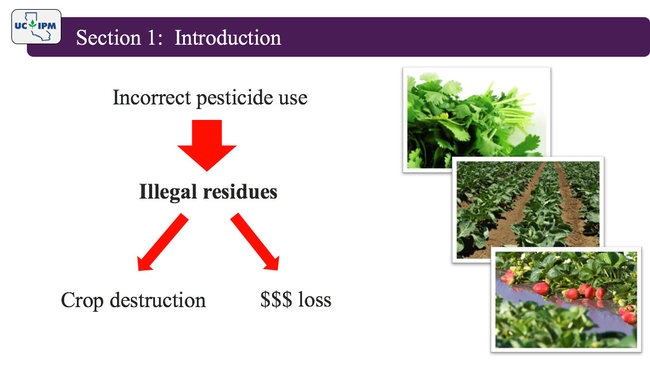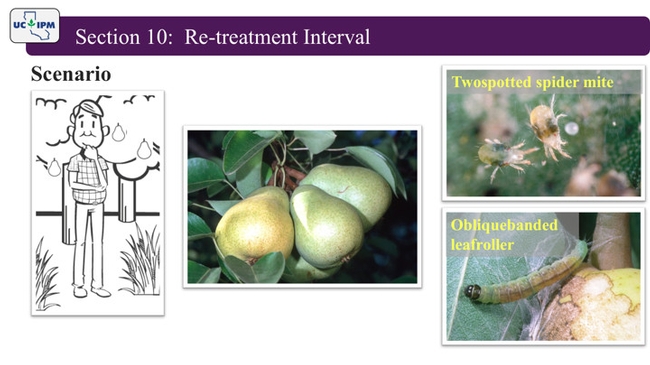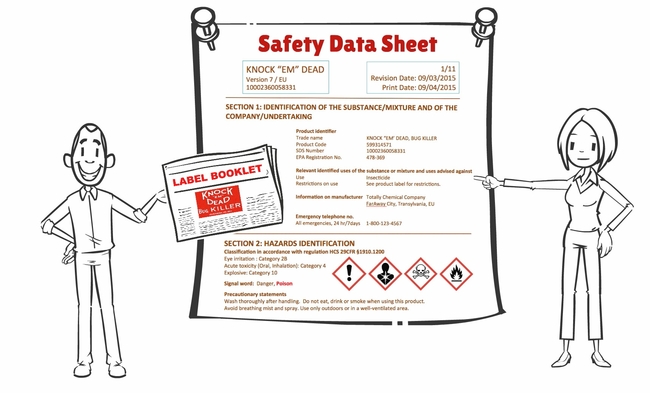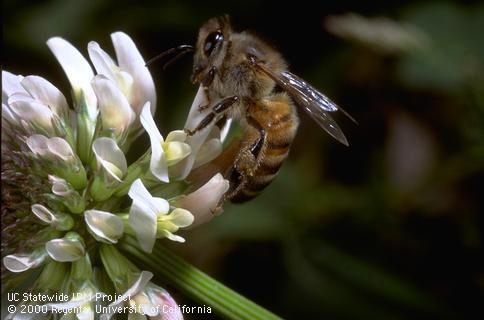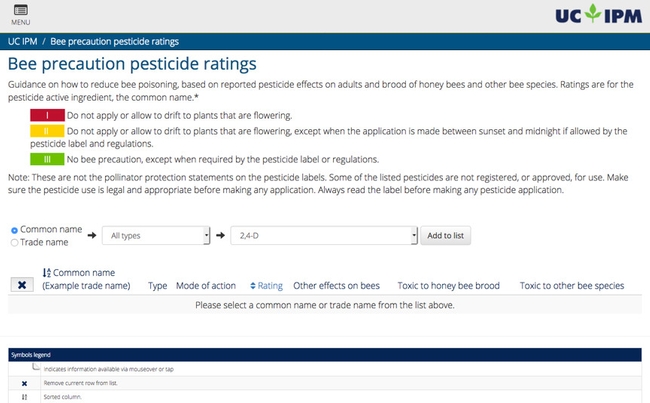Posts Tagged: UC IPM
New online course helps growers prevent illegal pesticide residues
Last month, a California grape farmer was fined $10,000 for using a pesticide in violation of the label, then packing and attempting to sell the tainted fruit. DPR detected the residues of a pesticide on the produced that was not registered for use on grapes.
Cases like this are rare in California but remind growers how important it is to apply pesticides correctly by following all pesticide label directions. The California Department of Pesticide Regulation (DPR) runs the most extensive Pesticide Residue Monitoring Program in the nation and is hard at work ensuring that the fruit and vegetables we purchase and consume are free from illegal pesticide residues.
Understanding and following label instructions is the focus of a new online course developed by the University of California Agriculture and Natural Resources Statewide Integrated Pest Management Program (UC IPM).
The program, Proper Pesticide Use to Avoid Illegal Residues, is targeted to those who apply pesticides or make pesticide recommendations. It explains what pesticide residues are, how they are monitored, and highlights important residue-related information from several sections of pesticide labels. In addition, the course identifies the following as the most important factors leading to illegal residues:
- Using a pesticide on a crop for which it is not registered
- Applying pesticides at an incorrect rate
- Ignoring preharvest intervals, re-treatment intervals, or plantback restrictions
Course participants are presented with several real-life scenarios. They must search through actual pesticide labels to determine if the scenario illustrates proper use of pesticides or if the described situation could potentially lead to illegal residues.
The overall goal of this course is to have participants follow pesticide label instructions when they return to the field. Following the label can eliminate incidences of illegal pesticide use.
Proper Pesticide Use to Avoid Illegal Residues is published just in time for pest control advisers and pesticide applicators who are still a few units short to renew their licenses or certificates with DPR. The course has been approved for two hours of Pesticide Laws and Regulations continuing education units (CEUs) from DPR and costs $40. If you don't need CEUs, but are still interested in viewing the course content, check it out for free on YouTube.
DPR recommends that renewal packets be submitted before Nov. 1 in order to receive your renewed license or certificate by Dec. 31, as the processing time can take up to 60 days. For additional online courses that UC IPM offers, visit the online training page.
Yellowjacket or Paper Wasp?
Western yellowjackets, nicknamed "meat bees" (as opposed to the "vegetarian honey bees") are often misidentified. A recent visitor at a camp in...
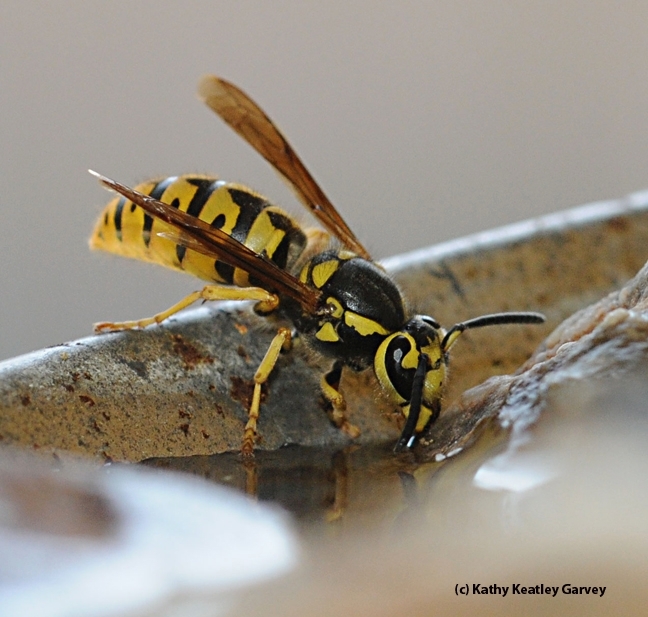
A Western yellowjacket, Vespula pensylvanica, sipping water. Note the black antennae. (Photo by Kathy Keatley Garvey)
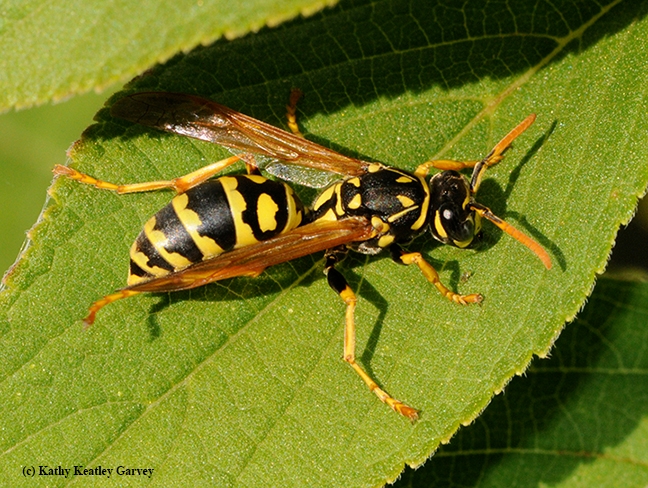
A European paper wasp, Polistes dominula, soaking up sun. Note the orange antennae.(Photo by Kathy Keatley Garvey)
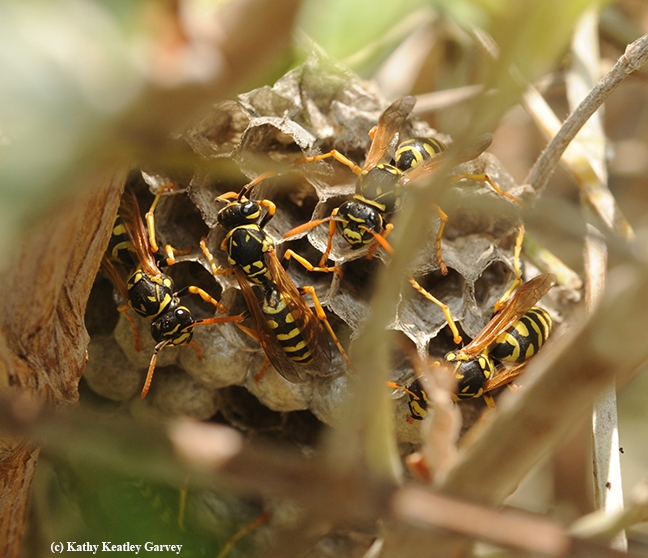
This is a European paper wasp nest tucked inside a shrub. Yellowjacket nests are often in abandoned rodent nests. (Photo by Kathy Keatley Garvey)
Protect bees from pesticides by using bee precaution ratings from UC IPM
Our mission at the University of California Agricultural and Natural Resources (UC ANR), Statewide Integrated Pest Management Program (UC IPM) is to protect the environment by reducing risks caused by pest management practices. UC IPM developed Bee Precaution Pesticide Ratings to help pest managers make an informed decision about how to protect bees when choosing or applying pesticides. You can find and compare ratings for pesticide active ingredients including acaricides (miticides), bactericides, fungicides, herbicides and insecticides, and select the one that poses the least harm to bees.
Ratings fall into three categories. Red, or rated I, pesticides should not be applied or allowed to drift to plants that are flowering. Plants include the crop AND nearby weeds. Yellow, or rated II, pesticides should not be applied or allowed to drift to plants that are flowering, except when the application is made between sunset and midnight if allowed by the pesticide label and regulations. Finally, green, or rated III, pesticides have no bee precautions, except when required by the pesticide label or regulations. Pesticide users must follow the product directions for handling and use and take at least the minimum precautions required by the pesticide label and regulations.
A group of bee experts in California, Oregon and Washington worked with UC IPM to develop the Bee Precaution Pesticide Ratings. They reviewed studies published in scientific journals and summary reports from European and United States pesticide regulatory agencies. While the protection statements on the pesticide labels were taken into account when determining the ratings, it is important to stress that UC IPM's ratings are not the pollinator protection statements on the pesticide labels. In a number of cases, the ratings suggest a more protective action than the pesticide label.
The UC IPM ratings also include active ingredients that may not be registered in your state; please follow local regulations. In California, the suggested use of the Bee Precaution Pesticide Ratings is in conjunction with UC Pest Management Guidelines (for commercial agriculture) and Pest Notes (for gardeners). Each crop in the UC Pest Management Guidelines has a link to the Bee Precaution Pesticide Ratings database and provides guidance on how to reduce bee poisoning from pesticides.
For more information on protecting bees from pesticides, see UC IPM's Protecting Natural Enemies and Pollinators, and use the Bee Precaution Pesticide Ratings.
Pretty in Pink--And in Other Colors, Too!
They're pretty in pink. Well, not just pink. All other colors, too. It's National Honey Bee Day on Saturday, Aug. 20. That's when we...
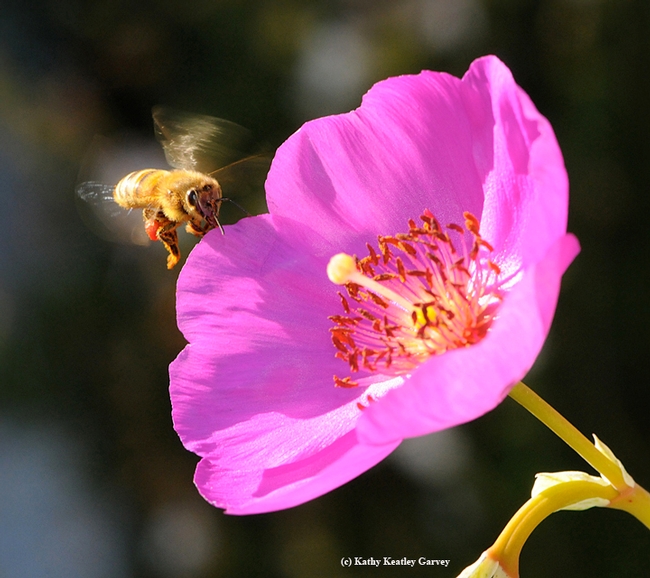
A honey bee heads toward rock purslane. (Photo by Kathy Keatley Garvey)
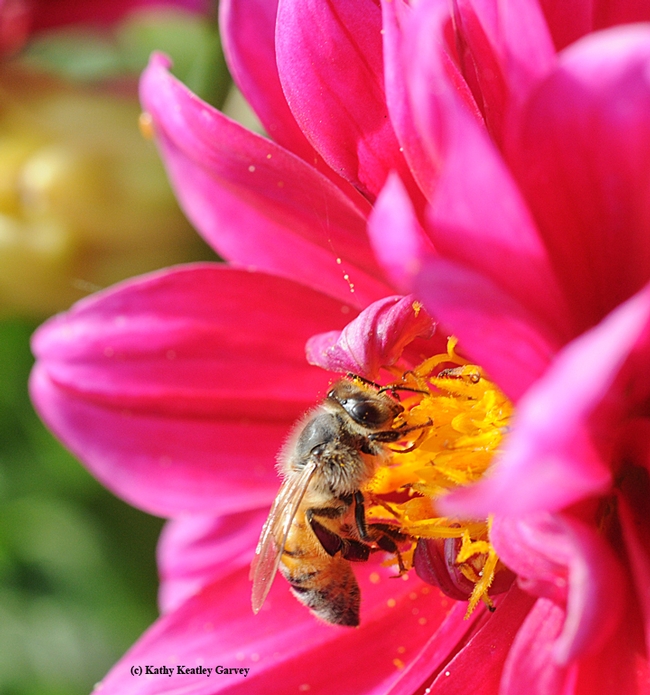
Honey bee foraging on zinnia. (Photo by Kathy Keatley Garvey)
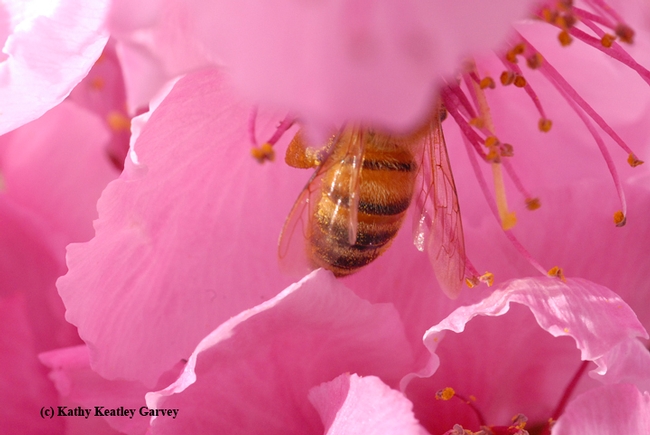
This bee took a liking to a nectarine blossom. (Photo by Kathy Keatley Garvey)
Moths! Moths! Moths! Can You Identify Your Moths?
So you have this significant garden pest--a caterpillar eating your cabbage, lettuce, tomato, squash, geraniums and petunias--and more. And then one...
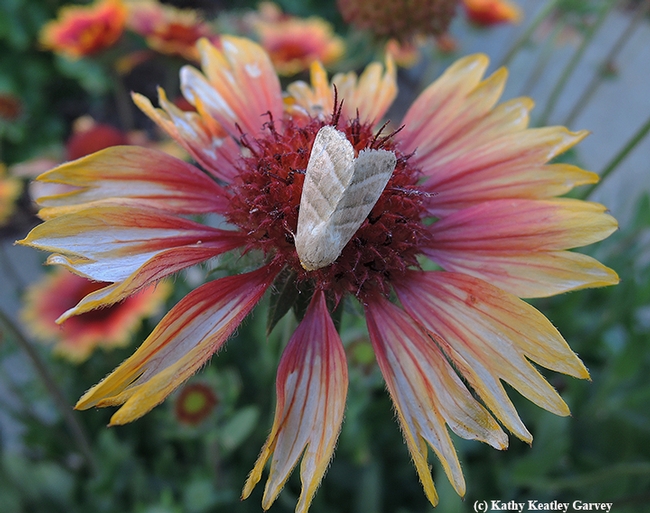
This moth is the Tobacco Budworm (as identified by Lepitopteran Art Shapiro, UC Davis distinguished professor of evolution and ecology) It's shown here on a blanket flower, Gaillardia. Photo by Kathy Keatley Garvey)


